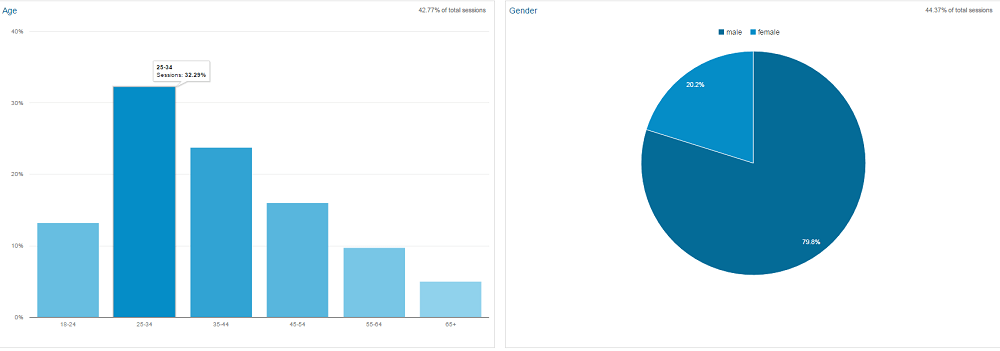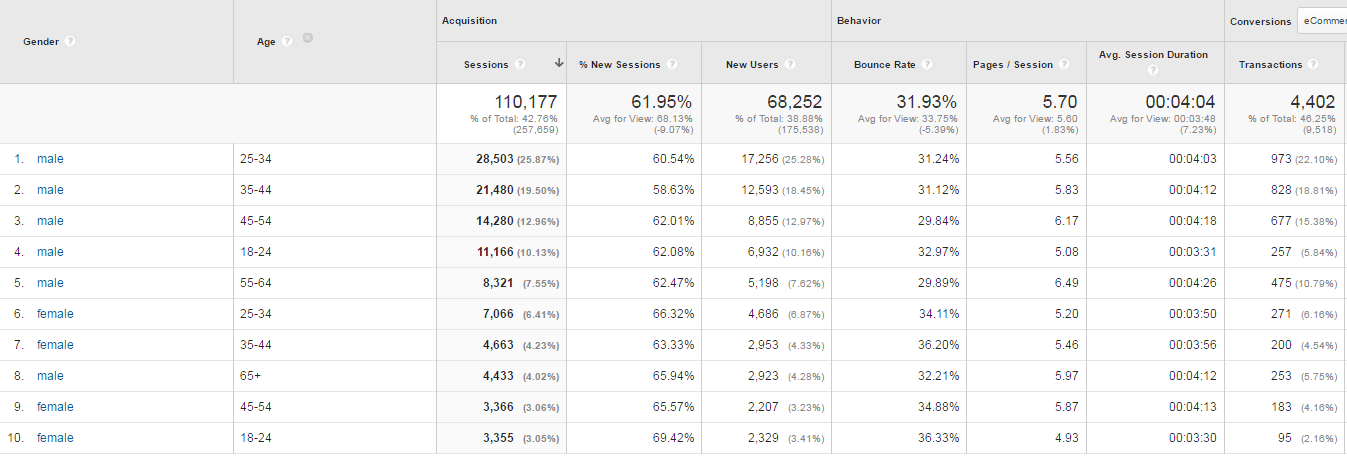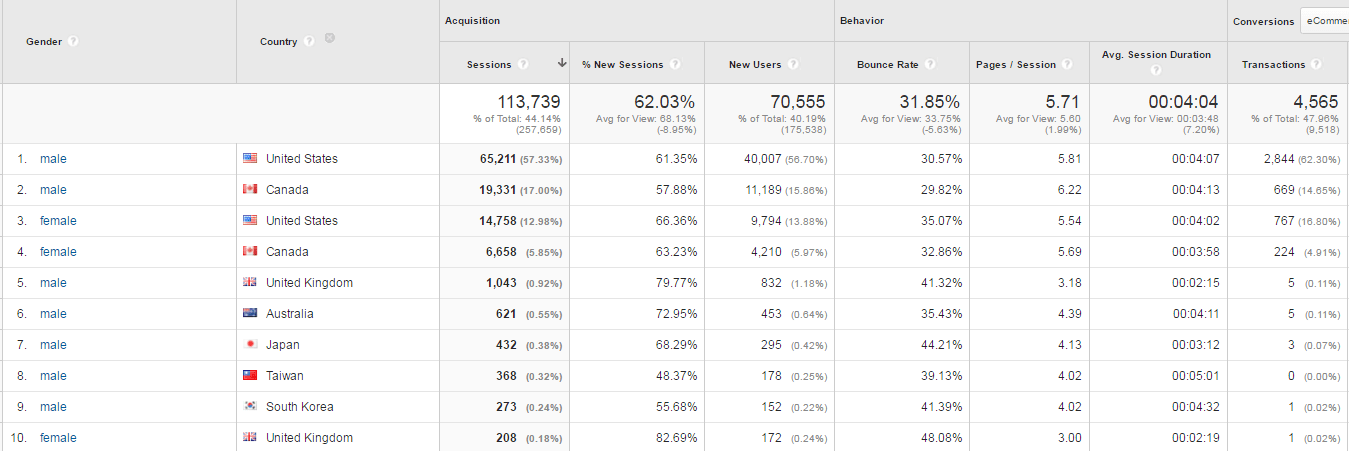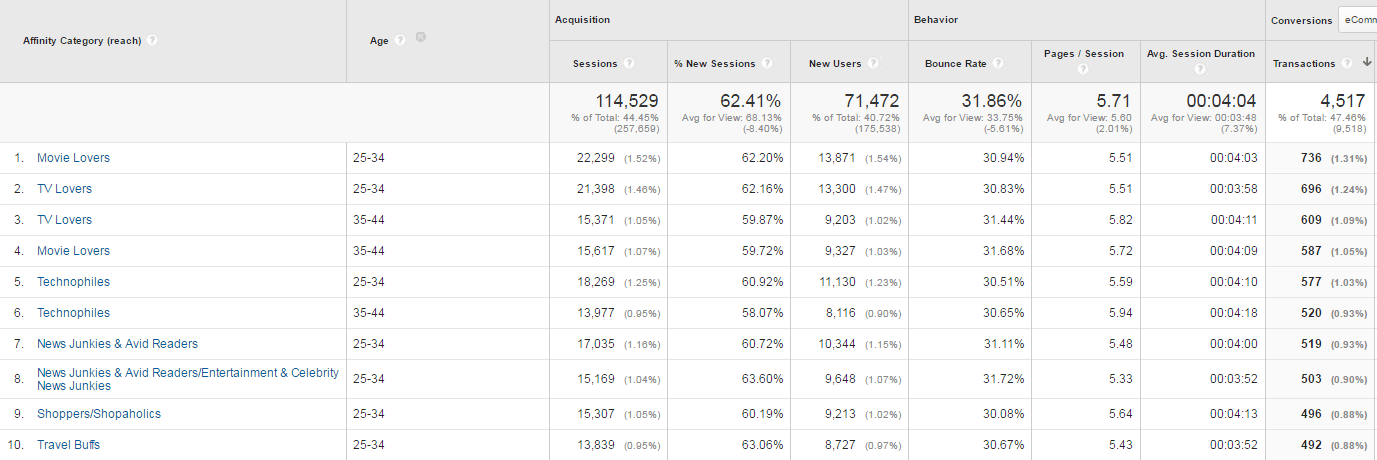As a marketer, there is so much expectation for being both creative and analytical. This is especially true for smaller businesses that don’t really have enough resources to invest in a larger marketing department. But, no matter what industry you work in, to become successful in marketing, you should always start with your target market. You should be asking yourself, who is going to be buying my product or service and what appeals to them.
Google Analytics as your Guide
You can find a lot of information about your brand’s online audience from your website’s analytics. In fact, using Google Analytics can show you more than just the basics about your audience. It tells you relevant information about your buyer’s age and gender, who is the majority of your traffic and which group generates the most revenue or has the most number of transactions in your business. You can look further into what your audience is interested in, what hours of the day are they online and what devices they are using to engage with you.
Let’s start by defining what a buyer persona is and why it’s important to create a buyer persona before planning your marketing campaigns.
What is a buyer persona?
A buyer persona is a representation of your ideal customer based on research and facts. It is an integral part of any successful marketing campaign, whether you are working on any traditional or paid marketing, because it helps you identify who are most likely to purchase your product or service.
For example, if you sell men’s underwear, you may create a buyer persona named Dave. Dave is 35 years old who loves playing golf. He’s also interested in technology and fashion and reads and stays up to date with the latest trends online. He works as a Director of Sales, lives in downtown Vancouver and will pay more for higher quality goods.

Personas help you directly target your campaigns to the ideal customer you have created.
For those who have already established a buyer persona, it’s best to still keep an eye on changes that may be happening online. You may notice a specific trend that could be used to segment a campaign event further.
For those who haven’t established your buyer persona yet, here are some tips on how to look into Google Analytics to create your buyer persona.
- Make sure to go back as far as statistically relevant to get a broad range of data.
Keep in mind that data from 5 years ago may not truly reflect the state of the current market so be sure to gather statistically significant and relevant data.

- In Google Analytics, look into your Audience Tab and review the Demographics Overview.
You can use your Demographics Overview to understand a high-level view of your audience and then segment further details about your buyers.
In this example, you can see that there is a 2:1 ration of male to female users.

We also segmented the demographics further based on gender and age and we could immediately see that majority of visits to the website are from males ages 25- 34. The majority of transactions also came from this age group.

Now, let’s drill down even further and view our audience by location. Based on gender, the image below shows that 57% of website visits are from males based in the US while 17% are males based in Canada. In addition, 62% of purchases are made by males from the US rather than in Canada. This clearly shows that the primary buyer is from the US. However, you may also choose to create another buyer persona to encompass users in Canada.

Now let’s understand what these users are interested in.
- In Google Analytics, look into your Audience Tab and review the Interests Overview.
Interests gives you an idea about the lifestyle of your buyer persona and their preferences for certain products or services. Google captures this data based on their understanding of users on the Google Ad Settings. And although this data is only from a subset of users, it still represents a large sample of users based on their search habits.
Under the Interests section you have 3 sub-sections which you could use to draw more insight about the lifestyle of your audience:
- Affinity Categories – This category analyzes someone’s overall interest, passion and lifestyle based on their browsing behaviour. It looks into what your user reads often, common search terms and patterns in your behaviour.
- In-Market Segments – These are users who are actively searching and comparing products or services and are more likely to buy your products. You may think of them as users lower in the purchase funnel.
- Other Categories – Users that are not in either affinity or in-marketing segments
Now, the next step is to identify the interests of high converting customers. Based on the example below, we could see that Movie Lovers, TV Lovers and Technophiles collectively represent users who bring in the most revenue. Therefore, knowing that 25 -34 year old men have these interests, these are the users you want to focus more on.

Now that you’ve seen a slither of just what Google Analytics can show you about your customers, how does this compare with your existing buyer persona? And if you haven’t created one, hopefully these can give you some ideas to build yours today.
Remember if you don’t know who your customers are, how will you be able to assess whether you are meeting their needs?
Below are some questions to help you structure your buyer persona.
- Select a name and image
- What is their age and gender
- What are their interests and goals
- Where do they live and what do they do for a living
- What would make them buy your products/ services
What are some other data-driven methods you have used to discover or analyze your buyer persona? If you would like some help in determining your buyer persona, we’re here to help! Leave your comments below and one of our Google experts will contact you.



